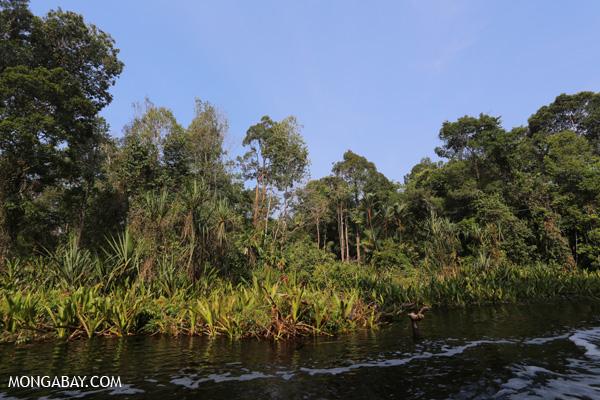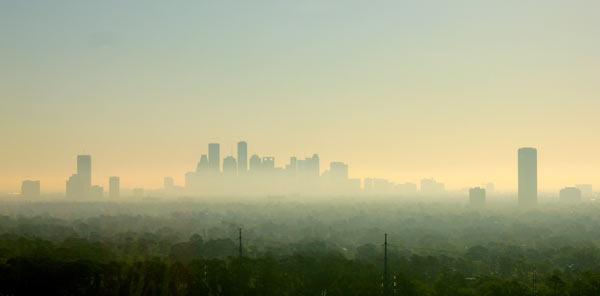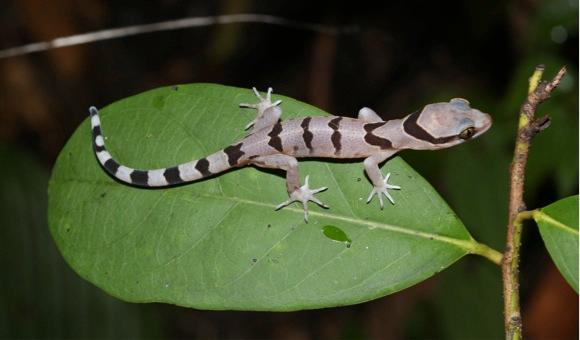Given the scientific name Scytalopus gonzagai to honor Brazilian ornithologist Dr. Luiz Antonio Pedreira Gonzaga, scientists previously considered the Bahian mouse-colored tapaculo to be a population of an already known species, the mouse-colored tapaculo or S. speluncae, first discovered back in the 1990s. However, new analysis of S. gonzagai’s calls and morphology led a team of researchers from the Universidade Federal de Pelotas to discover that it is, in fact, a distinct species. They published their findings in The Auk, the official publication of the American Ornithologists’ Union.
Scylatopus is a genus of small songbirds in the family Rhinocryptidae that are found mainly in mountainous regions throughout South and Central America, from Tierra del Fuego to Costa Rica. This is not the first time there’s been some confusion surrounding the genus that needed clearing up.
“The Neotropical avian genus Scytalopus has a long history of taxonomic problems, primarily resulting from the relative uniformity of morphology throughout the genus,” the team, led by Dr. Marcos Bornschein of the Mater Natura-Instituto de Estudos Ambientais in Curitiba, Brazil, writes in the paper announcing the new species. Their analysis of 11 specimens as well as recordings of three more birds that were not collected revealed that the Bahian population of S. speluncae "is clearly diagnosable from all other Brazilian Scytalopus in terms of plumage color, morphometrics, and vocalizations."
The Bahian mouse-colored tapaculo, known to locals as the “macuquinho-preto-baiano,” is only 12 centimeters (4.7 inches) in length on average, has yellow to brown claws, and is covered in gray plumage that makes it difficult to see in its preferred habitat of dense ground cover in humid evergreen forests. According to the team that discovered the species, it has three types of vocalizations: “the song, the alarm call, and what we term the ‘kreew’ call, which is probably a contact call.”
The researchers located S. gonzagai in only five patches of forest across two distinct mountain ranges in the Atlantic Forest of southern Bahia, Brazil: on the eastern slopes of the Planalto da Conquista between the municipalities of Boa Nova and Iguaí, and about 100 kilometers (62 miles) to the southeast in the municipality of Arataca in the Serra das Lontras mountains. Its territories are mostly primary forest, though some individuals were observed in second-growth or disturbed forest. The researchers estimate its total “area of occupancy” as just 5,885 hectares and its population as being some 2,883 individuals.
Because of the Bahian mouse-colored tapaculo’s low population size and the fact that the forest remnants in which many individuals live are “under great pressure from clandestine timber extraction, deforestation, and frequent burning to expand areas for pastures and agriculture,” Bornschein and his team argue that it qualifies as endangered under IUCN criteria.
Nearly 60 percent of S. gonzagai’s range is inside areas recently designated as Brazilian national parks, but the rest live in primary and secondary forests—primarily in the Boa Nova-Iguaí region—that are being degraded by human activities. Global Forest Watch data shows that Bahia state had a net loss of close to two million hectares of forest between 2001 and 2012, losing nearly 200,000 hectares of forest in 2012 alone, the last year for which data is available. In other words, Bahia lost about 10 percent of its forest cover in just over a decade.
The Atlantic Forest of Brazil, or Mata Atlântica, has been hit hard by agriculture and urban expansion. Alarmingly, deforestation is up nearly 10 percent this year, the worst it’s been since 2008, driven largely by clearing for charcoal production and soybean plantations. The World Wildlife Fund estimates that of the more than one million square kilometers (386,000 square miles) of Atlantic Forest that once covered the coast of Brazil, just 7 percent remains today. Of this, only 3.5 percent has been left intact.
The Atlantic Forest is the most endangered of the world’s 35 biodiversity hotspots, with severe habitat loss leading to the local extinctions of more than 78 percent of local mammal populations. Yet, areas that are still forested abound with life. A survey of one hectare in Bahia state found 450 tree species, for instance. Researchers have documented 23,000 types of plants in the Atlantic Forest, 20 percent of which are endemic to the region. There are also 264 species of mammals, close to 1,000 bird species, some 456 amphibians, over 300 reptiles, and 350 freshwater fish—31 percent of which cannot be found anywhere else on Earth.
A study published earlier this year in Science determined it would cost less than $200 million to save what remains of the Atlantic Forest.
Citations:
- Hansen, M. C., P. V. Potapov, R. Moore, M. Hancher, S. A. Turubanova, A. Tyukavina, D. Thau, S. V. Stehman, S. J. Goetz, T. R. Loveland, A. Kommareddy, A. Egorov, L. Chini, C. O. Justice, and J. R. G. Townshend. 2013. “Hansen/UMD/Google/USGS/NASA Tree Cover Loss and Gain Area.” University of Maryland, Google, USGS, and NASA. Accessed through Global Forest Watch on Dec. 04, 2014. www.globalforestwatch.org.
- Maurício, G. N., Belmonte-Lopes, R., Pacheco, J. F., Silveira, L. F., Whitney, B. M., & Bornschein, M. R. (2014). Taxonomy of “Mouse-colored Tapaculos”(II): An endangered new species from the montane Atlantic Forest of southern Bahia, Brazil (Passeriformes: Rhinocryptidae: Scytalopus). The Auk, 131(4), 643-659.
This article was originally written and published by Mike Gaworecki, a correspondent for news.mongabay.com. For the original article and more information, please click HERE.



